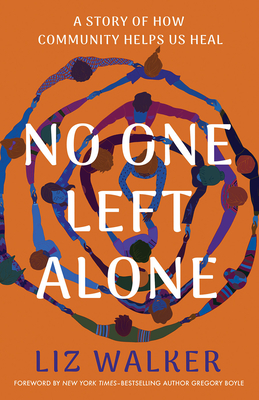Book Review: No One Left Alone: A Story of How Community Helps Us Heal
by Liz Walker
1-time National Bestseller, Adult Nonfiction (Hardcover)
(Apr 08, 2025)
Nonfiction, Hardcover, 272 pages
More Info ▶
Book Reviewed by Eryka Parker
The inspirational book No One Left Alone opens with the author sharing how members of the Boston community came together and, united, dealt with their grief following the bomb explosion at the 2013 Boston Marathon.
Three days after the explosion, the city hosted a massive interfaith prayer service. Massachusetts governor Deval Patrick and his staff understood that an immediate, public ritual of mourning and solidarity was as important to Boston as the international efforts to apprehend the killers. We needed a way to stem the growing current of fear and helplessness.
writes journalist and minister Liz Walker, who was also the first Black woman anchor to host a Boston evening newscast. Walker’s book moves forward as a heartfelt exploration of the power of community in the face of trauma and grief. As a newly installed pastor at Roxbury Presbyterian Church, Walker witnessed the trauma of a community impacted by violence and hope. Her position allowed her to see firsthand the healing power of connection, and this book shares the emotional and transformative journey of the grassroots trauma-healing program she helped create.
The grassroots program that started in the church basement is called Can We Talk… Community Sharing of Trauma and Healing, and it was designed to offer a safe space for individuals to fellowship, share their grief, and find support without judgment or preaching. Its aim is to help people from all walks of life, particularly those affected by violence, loss, and systemic racism, process their trauma in a space of shared empathy. Walker explains, “Grief is part of the human condition, but it doesn’t have to consume us… I believe we have the power to create soft spaces in hard places everywhere—to create rooms where people feel embraced and loved and listened to.”
In this environment, people are invited to share pain, stories, and hopes for healing. Through this collective experience, deep emotional and spiritual growth begins.
No One Left Alone: A Story of How Community Helps Us Heal is comprised of 14 chapters with titles such as “The Inequity of Grief,” “Creating a Soft Space,” and “The Art of Healing.” What stood out for me is Walker’s emphasis that trauma does not have to be faced alone. Life’s loads are heavy, and though we’re all tasked with individual paths, when burdens become too heavy to carry, it’s the community’s responsibility to unite and share the load. Community support is at the core of Walker’s message, and I found it deeply resonant. It affirms that the path to healing isn’t isolated but consists of collective strength and love. As Walker writes, “[Christianity and psychology] both disciplines agree that humankind’s core problem is alienation. And the solution to that estrangement and isolation is found in connection and genuine community.”
Written with insight and insistence, Walker shares stories of people like Roy, a young man who turned to heroin and crime after the deaths of both his parents; the book explores even those in the deepest struggles can find hope and healing through the support of others. Roy consistently shows up to Can We Talk… “sharings” fully committed, transparent about his struggles with addiction, and benefits from the group’s unconditional support. The emotional and spiritual healing is enhanced by an atmosphere of deep empathy, where people can listen, share, and grow without the pressure of unsolicited advice or judgment. The book also touches on secondary trauma, the impact trauma can have on those who aren’t directly affected but are deeply connected to those who are experiencing it. Even being adjacent to traumatic experiences can significantly impact us. Walker discusses how church and mental health professionals can partner to address the widespread impact of secondary trauma and grief. “When a faith community partners with the mental health community, we strengthen our soft approaches to our hurting neighbors.”
Walker takes a compassionate, thoughtful, and, above all, hopeful approach to the trauma experienced by her community with a deep understanding of the need for empathetic listening. I found No One Left Alone to be an engaging and deeply impactful read. It shines a light on the importance of creating spaces for people to heal together, especially in communities of color where trauma is often personal and systemic. It’s an inspiring testament to the power of sharing stories to foster connection. I recommend this book to anyone seeking to understand the intersection of grief, community, and healing, especially in the context of social justice and faith.
Walker’s message is clear: No one should be left alone in their grief, and together, we can find healing in the soft spaces we create for one another.

